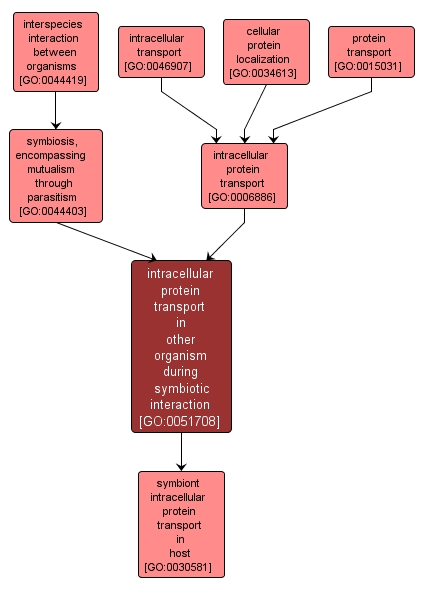GO TERM SUMMARY
|
| Name: |
intracellular protein transport in other organism during symbiotic interaction |
| Acc: |
GO:0051708 |
| Aspect: |
Biological Process |
| Desc: |
The directed movement of an organism's proteins within a cell of a second organism, where the two organisms are in a symbiotic interaction. |
|

|
INTERACTIVE GO GRAPH
|














